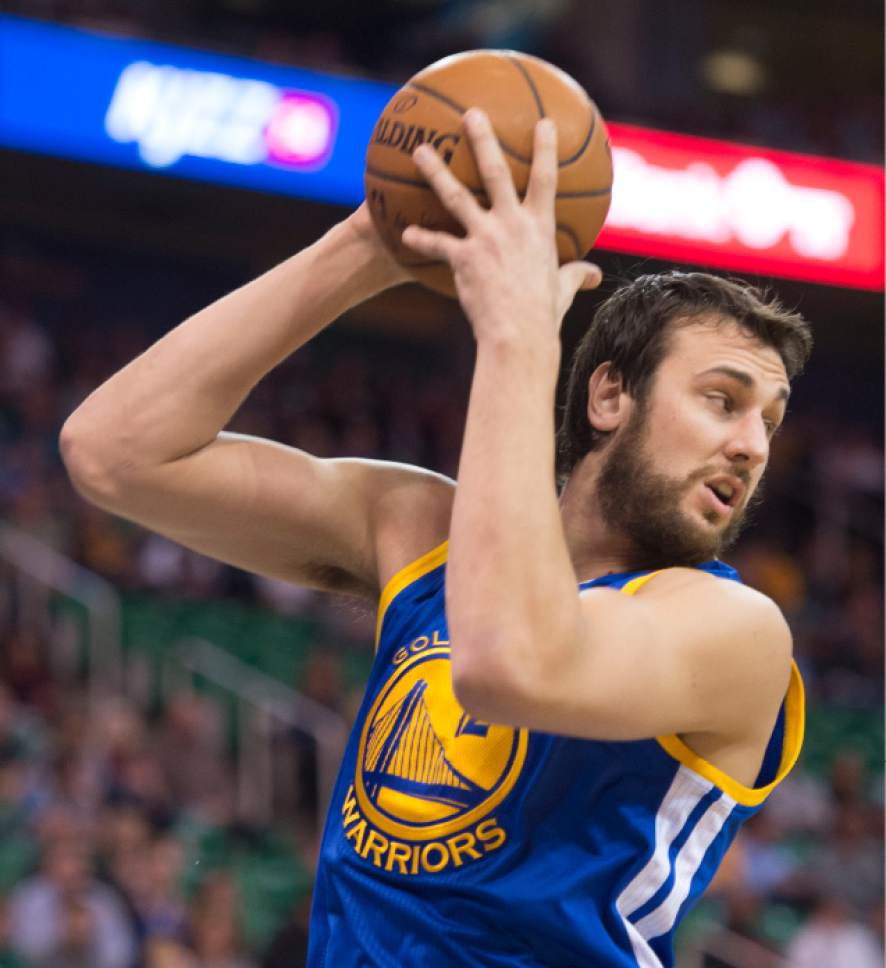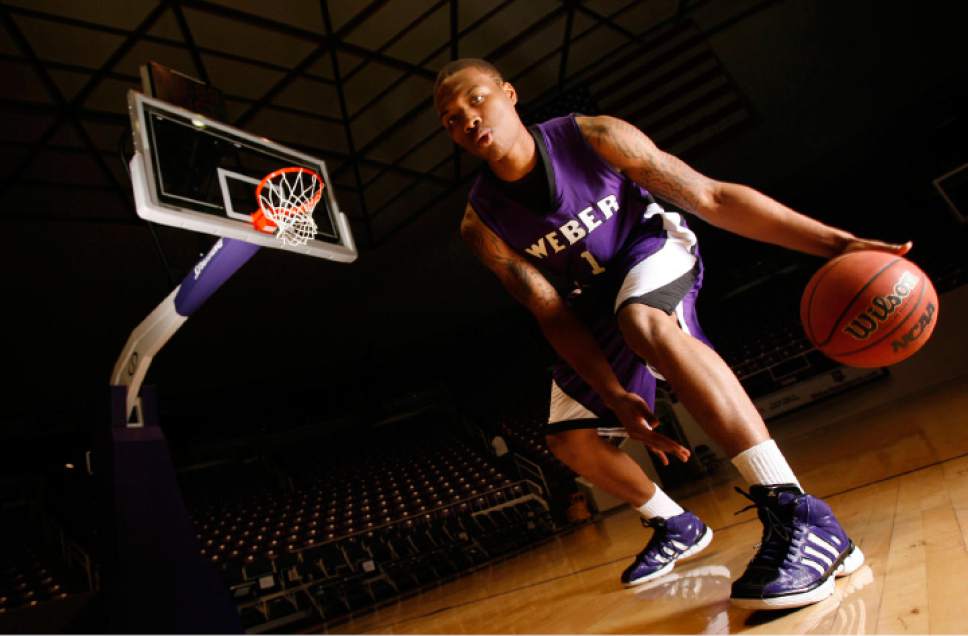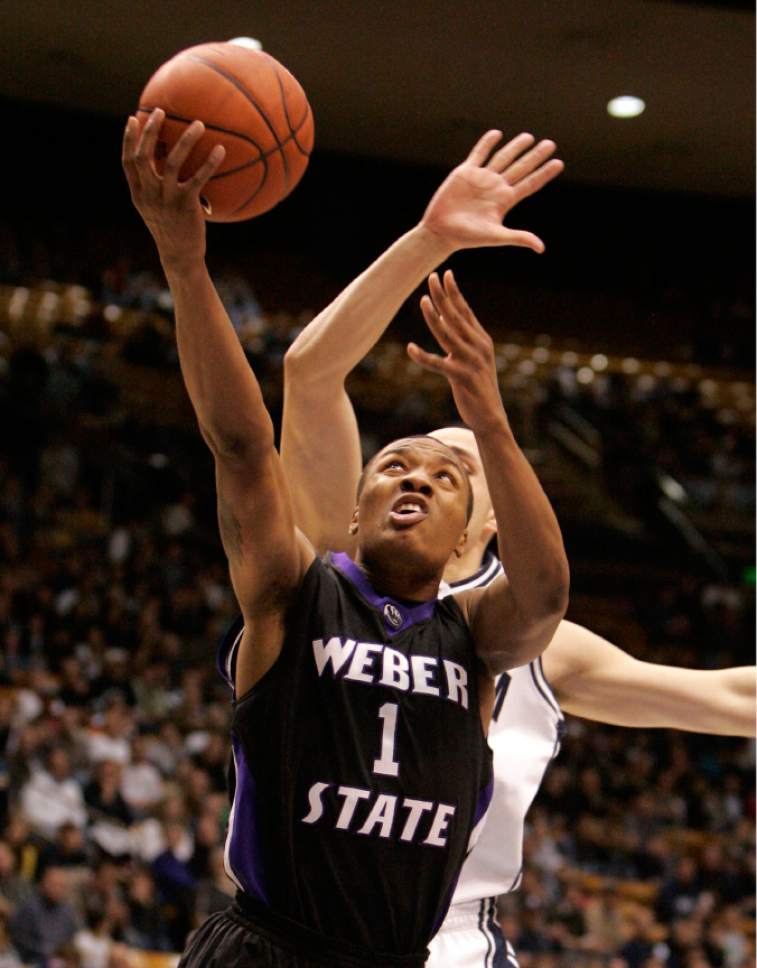This is an archived article that was published on sltrib.com in 2016, and information in the article may be outdated. It is provided only for personal research purposes and may not be reprinted.
So, we're foolishly attempting the impossible here, impossible to get it absolutely right. But we're naming five starters on an all-time-greatest basketball team made up of guys, by position, who played for top schools in the state of Utah.
There have been a lot of great ones, from Utah's Billy McGill to BYU's Kresimir Cosic, from Utah's Mike Newlin to BYU's Mel Hutchins, and the choices are difficult. (We'll do the same for college football in the days ahead.)
Consideration, in this case, does not limit players to what they did while a college athlete, which is to say, judgments are made on the candidates as basketball players in their totality, in college and the NBA, and on their overall ability. That's it.
Here goes …
Point guard: Damian Lillard, Weber St.
Jimmer Fredette got so much of the attention — he was, after all, the national college player of the year — when he was playing at BYU concurrently with Lillard at Weber, too often eclipsing him, and we're not making that mistake again. In fact, Andre Miller, who was great at Utah and has had an elongated pro career, finishes second here behind Lillard. He was terrific for the Wildcats and he's even more terrific now in Portland, where he has averaged 21 points and six assists over the past four seasons. This year, he's taken those numbers to 24.3 and 7.3. His efficiency isn't always the best, but his game is.
He was named the NBA's rookie of the year after the 2012-13 season, and subsequently named multiple times as an NBA All-Star. At Weber, Lillard averaged 19 points overall, and scored 24.5 per game during his junior season, his final year there, and ended up the fifth all-time scorer in the Big Sky Conference.
Randy Rahe said Lillard was not only the most talented athlete he'd ever been around, he also was the hardest working. That combination put Lillard in the favorable position to sign a five-year, $120 million contract with the Blazers last offseason and places him firmly as the quarterback of Utah's All-Time team.
Shooting guard: Danny Ainge, BYU
Ainge played at BYU from 1977-81, leading the team in scoring each of his four years, becoming at that time the leading scorer in school history. He may have remained that had he had the benefit of playing with the 3-point line. He scored in double figures in 112 straight games, and was a first-team All-American, the national player of the year, the Wooden Award winner in 1981.
He went on to play for Boston, Sacramento, Portland and Phoenix in the NBA, during which he averaged 12 points and won a couple of NBA titles. All told, he made more than a thousand 3-pointers during his career and had more than 4,000 assists. He's now the president of the Celtics. Most significantly, he was mentioned in the violent La Coka Nostra song, "Bang, Bang."
Small forward: Wayne Estes, Utah State
Don't really know that Estes fits this position in a traditional sense, but he was a fantastic scorer, with a soft touch and quick feet, for the Aggies in the early '60s, where he averaged a school record 27 points per game. He was the second-leading scorer in the country during his junior year, getting 33.7 points a pop, second only to Rick Barry, and went for 48 points in a game on the night of Feb. 8, 1965, after which he stopped to help a car accident victim and came in contact with a downed power line, contact that killed him.
The Lakers had planned on drafting Estes in the first round of the NBA Draft and there's no reason to believe the 6-foot-6, 235-pound All-American wouldn't have had a memorable pro career.
Power forward: Tom Chambers, Utah
Chambers played center for the Utes, teaming with Danny Vranes on those great Utah teams, and moved to power forward in the NBA, where he was a four-time All-Star during a pro career from 1981 to 1997. He scored 20,049 points over that span, averaging 18.1 and 6.1 rebounds.
Keith Van Horn outperformed Chambers during his time in college, scoring a school record 2,542 points and averaging 20.8, while also finishing second in total rebounds, with 1,074. But Chambers had the superior overall game and career.
Center: Andrew Bogut, Utah
During his time at Utah, when Bogut was the national player of the year, and before he became the No. 1 pick in the NBA Draft, he had a great ability to gallop up and down the floor, to block shots, to use those great hands and that great vision for passing. He had a ton of basketball brains and a soft shooting touch from range.
After more than a decade as a pro, after battling the league's big men, after suffering a string of fluke injuries, including that transformative fall to the court onto his right elbow as a Milwaukee Buck, everything remains except for the galloping and the soft touch. He still is an important part of what the Golden State Warriors are doing, especially at the defensive end, where, with defenders concerned about crowding the 3-point threat, so much traffic comes his way.
Bogut has averaged better than 10 points and nine rebounds during his NBA career, after getting 17 points and 11 boards at Utah. He's the best center to come out of any of the Utah schools and properly rounds out the justifiable-if-flawed all-time starting five.
GORDON MONSON hosts "The Big Show" with Spence Checketts weekdays from 3-7 p.m. on 97.5 FM and 1280 AM The Zone. Twitter: @GordonMonson.







